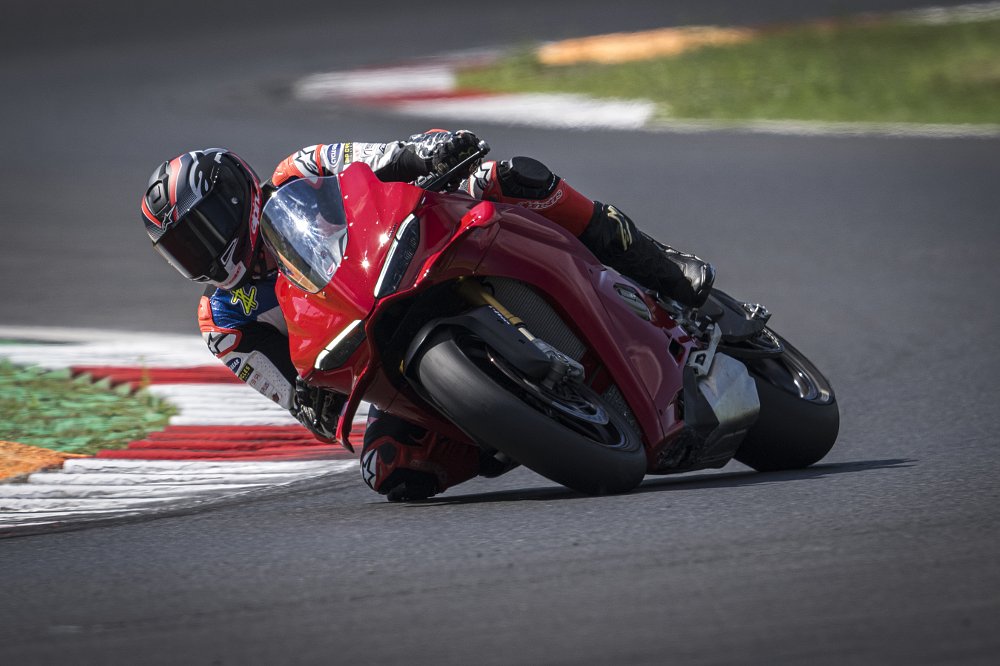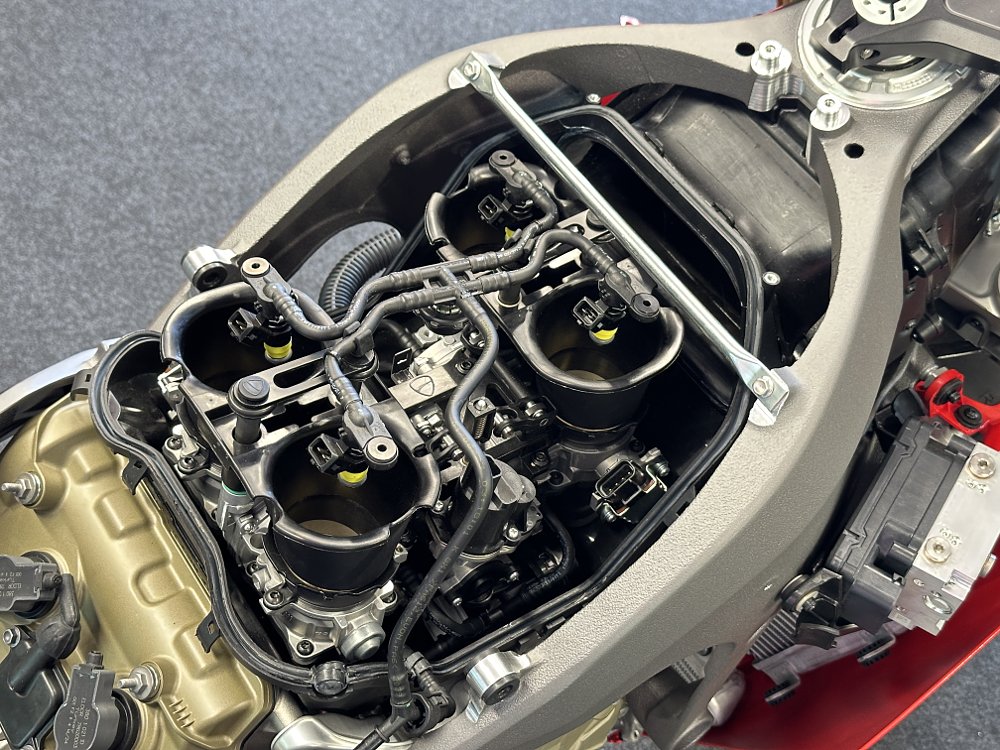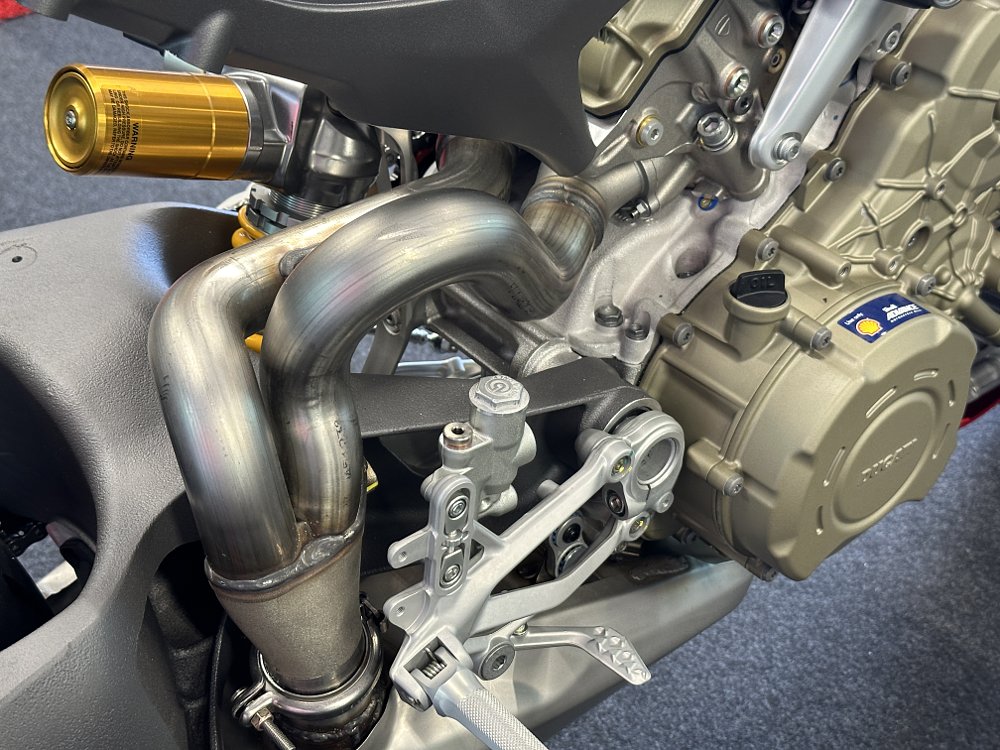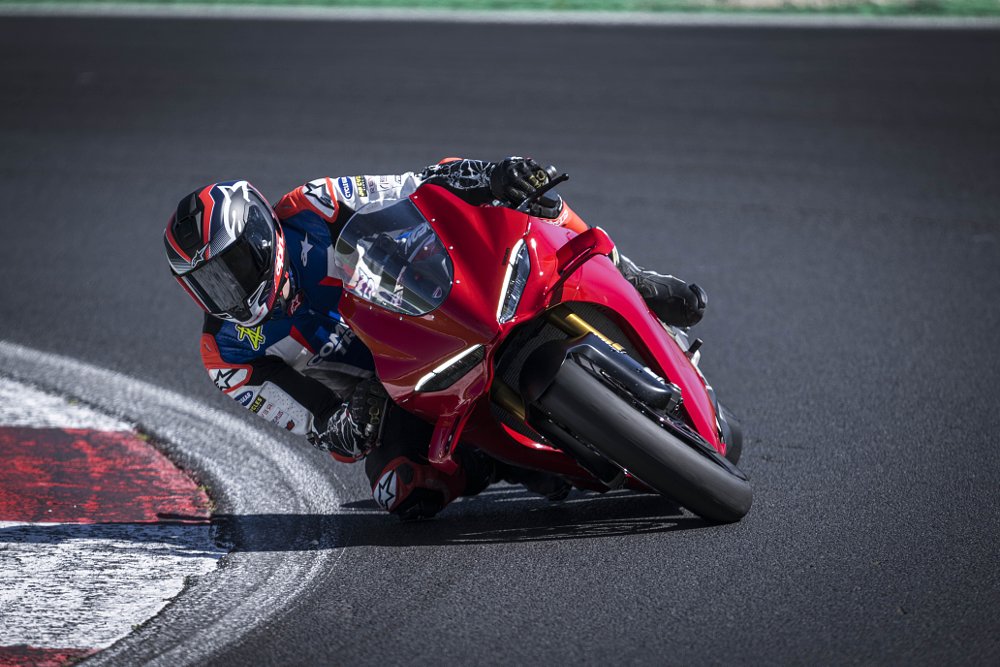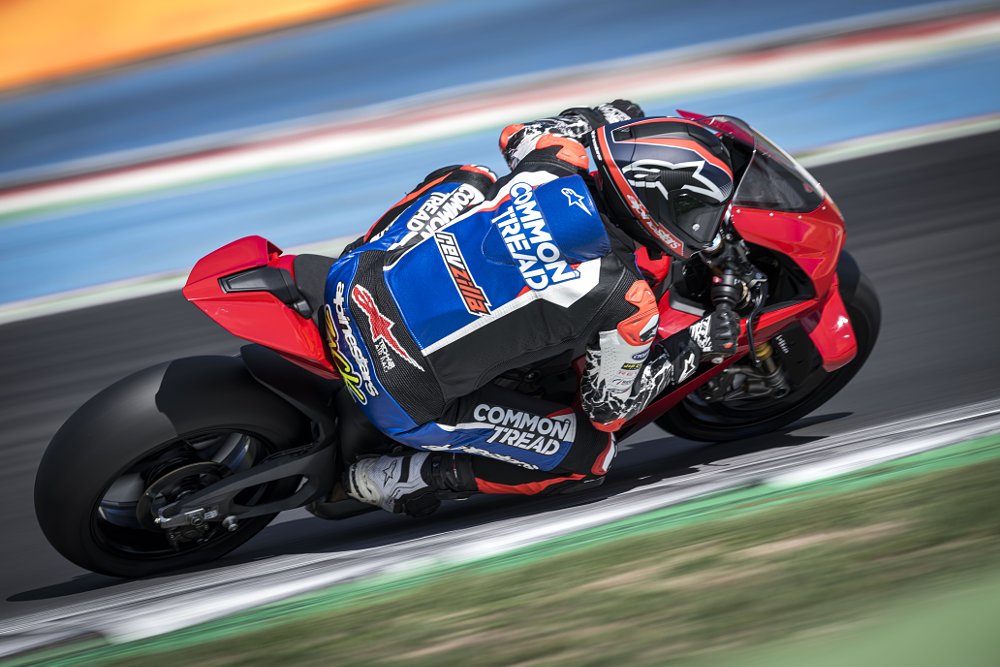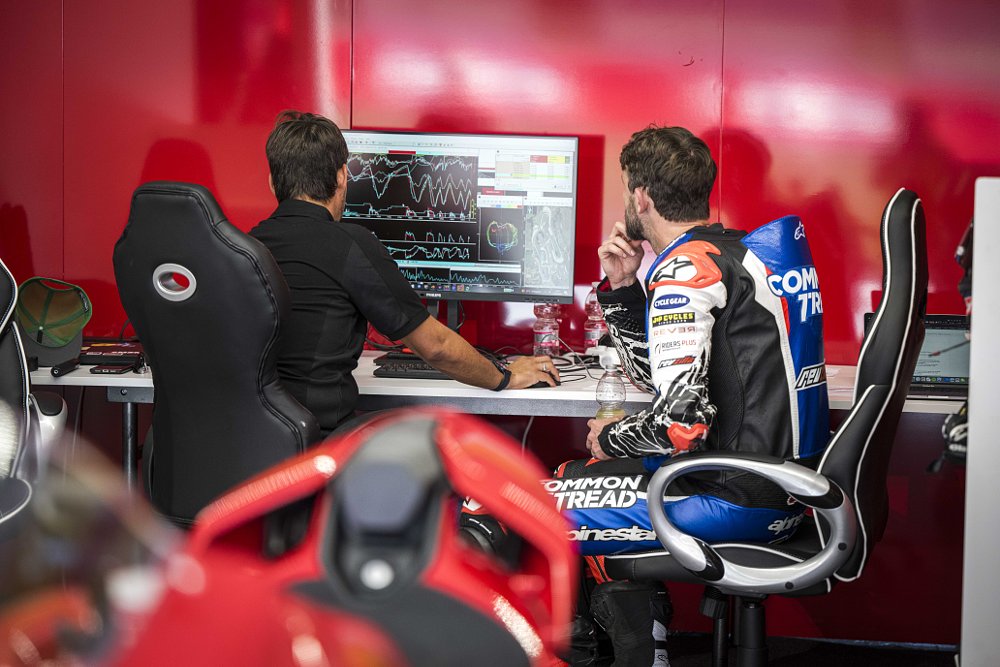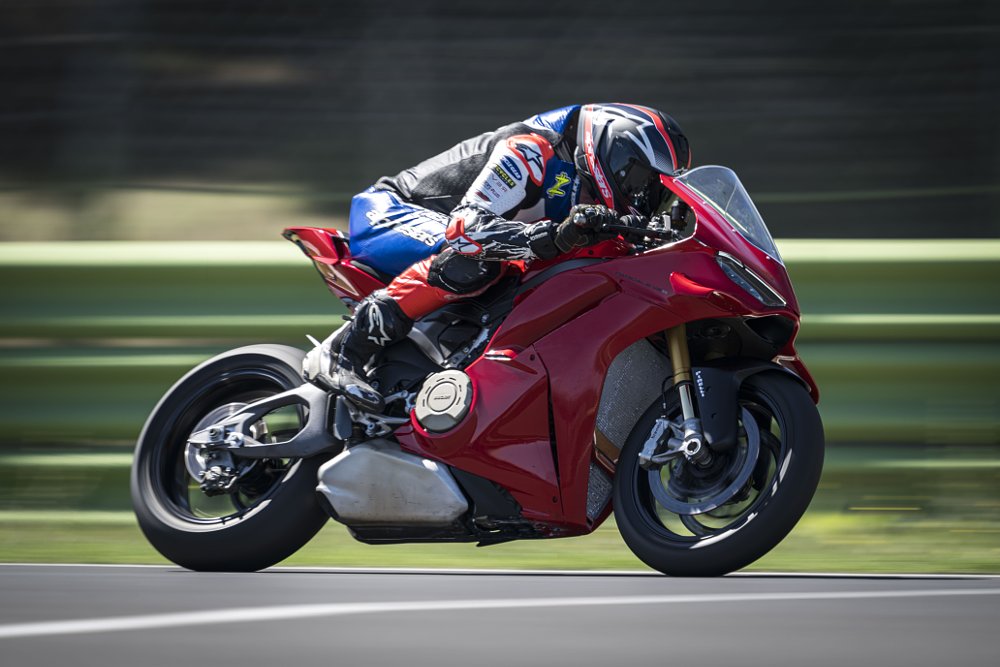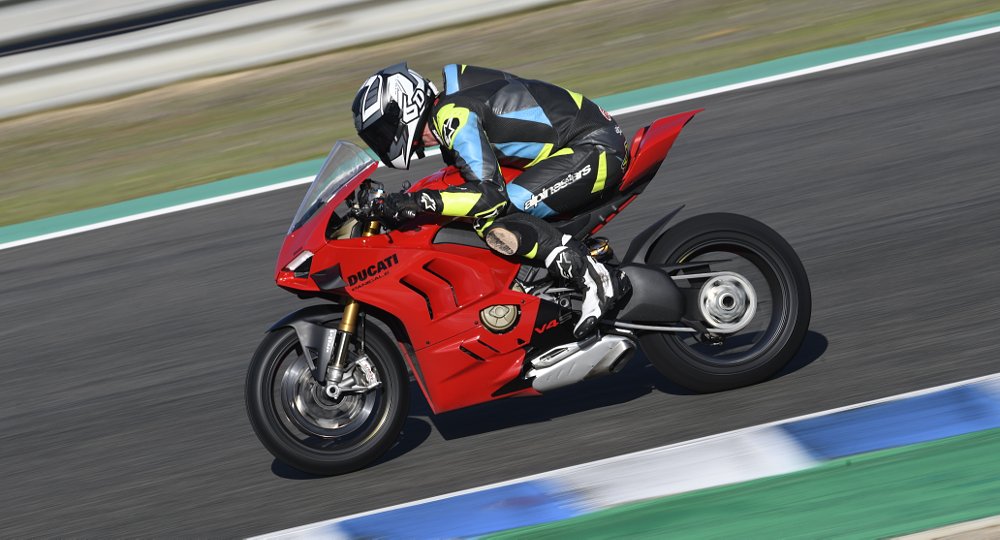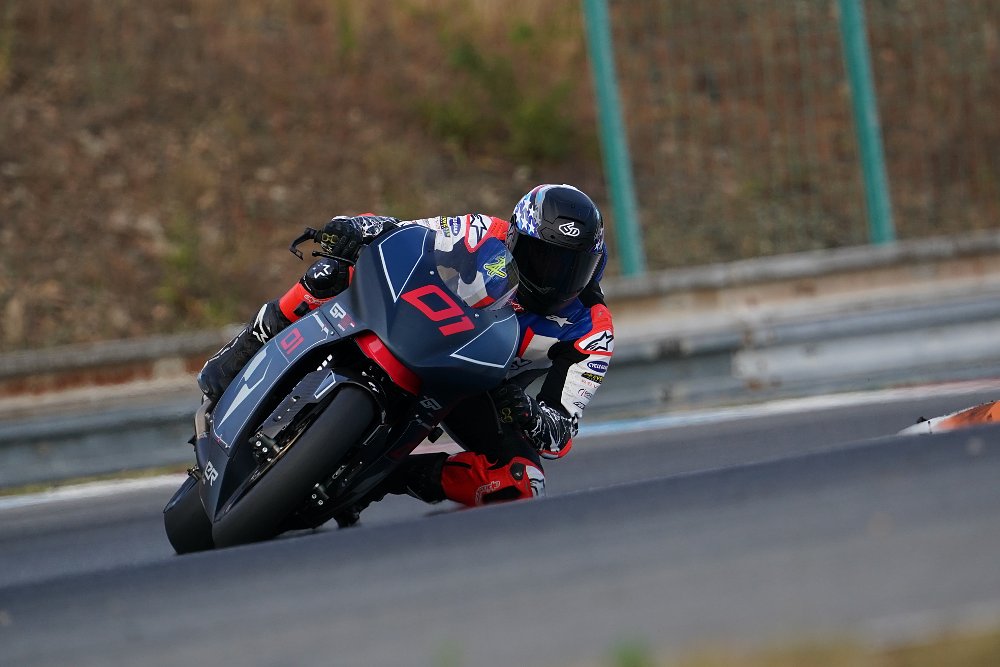I am sore. My hands are slightly blistered, my upper arms are tender, and my lower back feels strained. It feels like I tried an extreme sport for the first time, or got in a fight, but it wasn’t that. I used a motorcycle to do this to myself. I spent a day at a racetrack with the new Ducati Panigale V4 S.
I know what you’re thinking and no, I didn’t crash the thing. It’s just hard to ride a powerful, modern showroom superbike as fast as you can. It’s a little ironic that one of Ducati’s main missions with the updated version of its flagship sport bike was to make it easier to ride. But I think it worked, and that’s part of why I feel like I fell down a long set of stairs. Let me explain.
More Panigale, less Panigale
This new version of the Panigale V4 carries the same name the model has used since 2018, but the 2025 update represents the first major overhaul of the bike in six years. The most significant change for this seventh generation of Ducati superbike is arguably the most basic sections of its chassis, which have been made a lot less rigid.
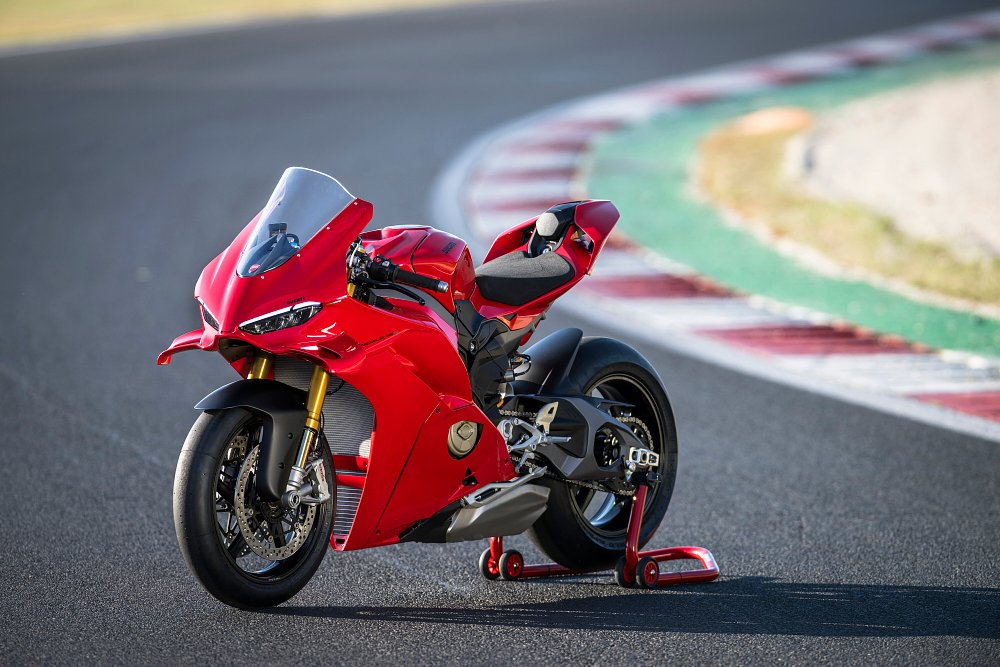
First, the swingarm, which made headlines by abandoning the single-sided design that Panigales up to this point have always had. More interesting than the double-sided aesthetic is the fact that it sees a reduction in lateral stiffness, to the tune of 37%.
The basic casting of the new swingarm is heavier than the old single-sided piece, but interestingly the new rear-suspension unit is about six pounds lighter. That’s because the old one, sexy as it was, needed a huge axle with massive bearings, plus some oddities like the eccentric chain-adjustment system, that ultimately ended up being heavier as an assembly.
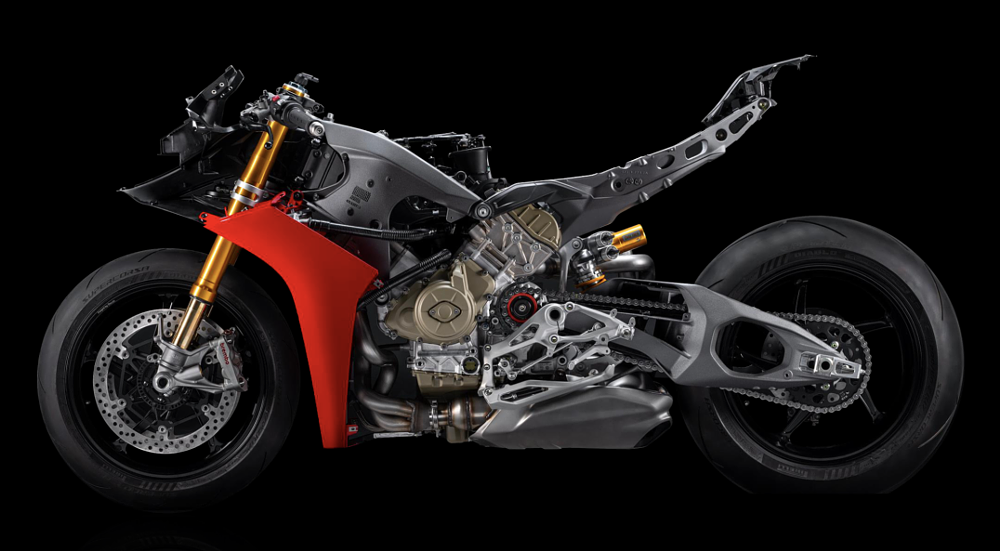
The frame uses the same design the Panigale V4 always has, an aluminum casting that holds the fork and stretches over the front of the engine, crucially connecting to the rear subframe near the junction of the seat and fuel tank. For 2025, the frame is almost two pounds lighter, but the big news is yet again the lateral stiffness measurement, which has been reduced by 40%.
Powering the flexy new chassis is a familiar, 1,103 cc V-four with desmodromic valve actuation and Ducati’s MotoGP-derived, twin-pulse firing order and counter-rotating crankshaft. A new exhaust system is compatible with stricter Euro 5.2 regulations, but still manages to squeeze under the engine and in front of the rear wheel.
Attempting to combat the slightly more constrictive exhaust are updated cams with a hair more lift on both intake (0.75 mm) and exhaust (0.45 mm). Also, intake stacks that offer a wider discrepancy between positions. At low rpm, the horns rest at a length of 80 mm (five more than before) and when the engine is breathing hard at higher revs the intakes are set at 25 mm (10 fewer).
Peak power for Euro-spec bikes goes up half a unit to 216 horsepower, says Ducati, and to hear the team tell it, that was hard. “It would have been easy to make the bike legal with 210 horsepower,” said one factory employee, “but we are Ducati.” Speaking of which, Panigale V4s bound for the U.S. market will be rated at 209 horsepower.
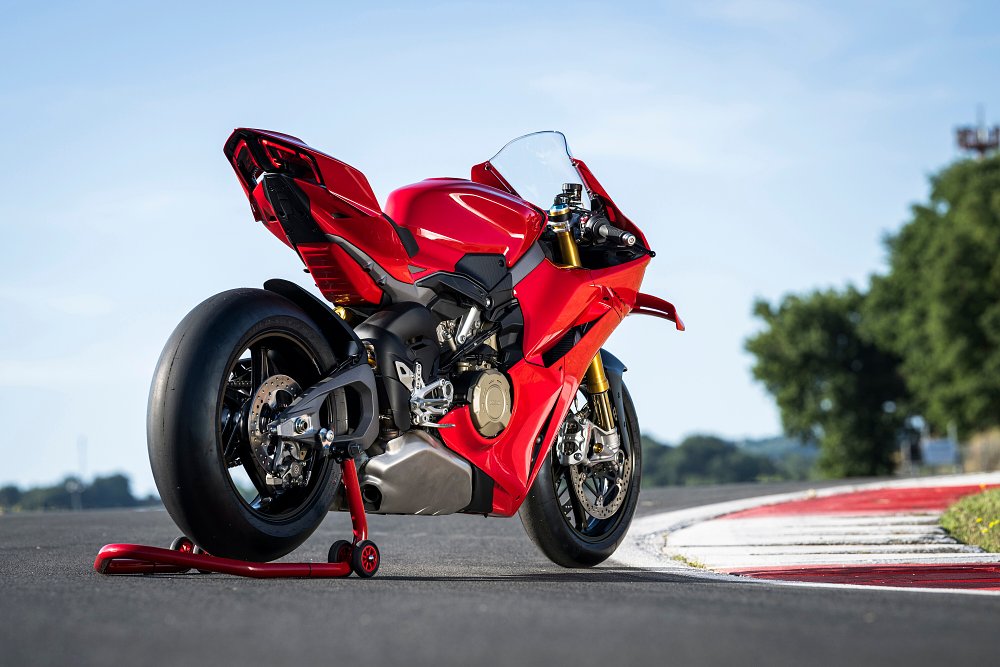
Halting all of those ponies are Brembo’s latest and greatest brake calipers, called the Hypure, which are lighter by 60 grams total and cool better than the previous setup, which was pretty close to perfect, as far as I could tell. Every little bitty thing helps a little bitty bit.
Far from little bitty is the new 6.9-inch dash unit, set in 8:3 wide format and state of the art in every way. The depth of settings to change and different view panels that can be selected are too many to count. Hopefully, the images below give you an idea. Basic structure of the systems and how to adjust them is largely the same as in the past. That is, three ride modes designed for the street (Sport, Road, and Wet), with multiple levels of power output (Low, Medium, High, and Full) applicable to any and all modes. Same goes for most of the other systems; ABS, traction and slide control, et cetera.
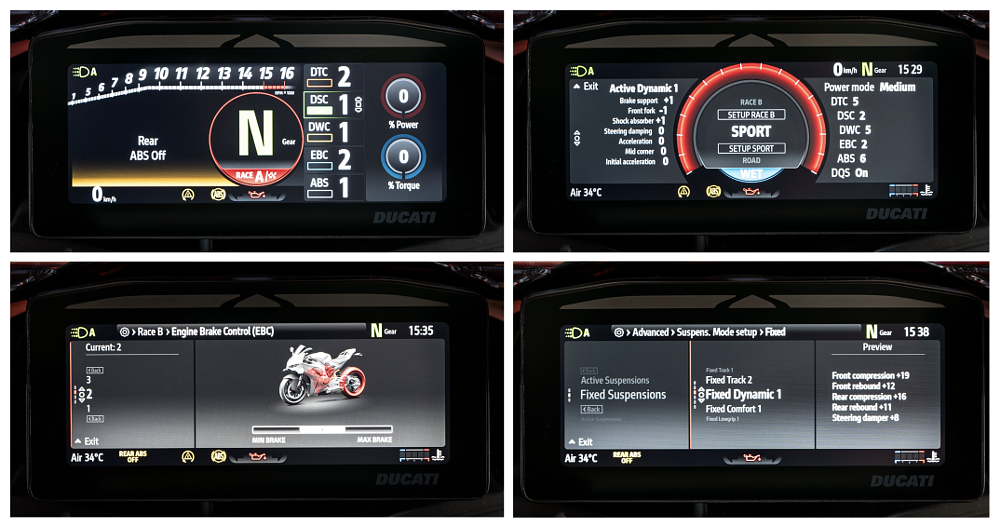
There are also two track modes (Race A and Race B) which offer more nuanced adjustments for all of the layers of the safety suite. Öhlins’ “event-based” modes let the rider choose more or less support or comfort from the fork and/or shock, which leads the system to add compression and rebound damping and varying rates depending on the mode, the speed, and the inputs the bike receives.
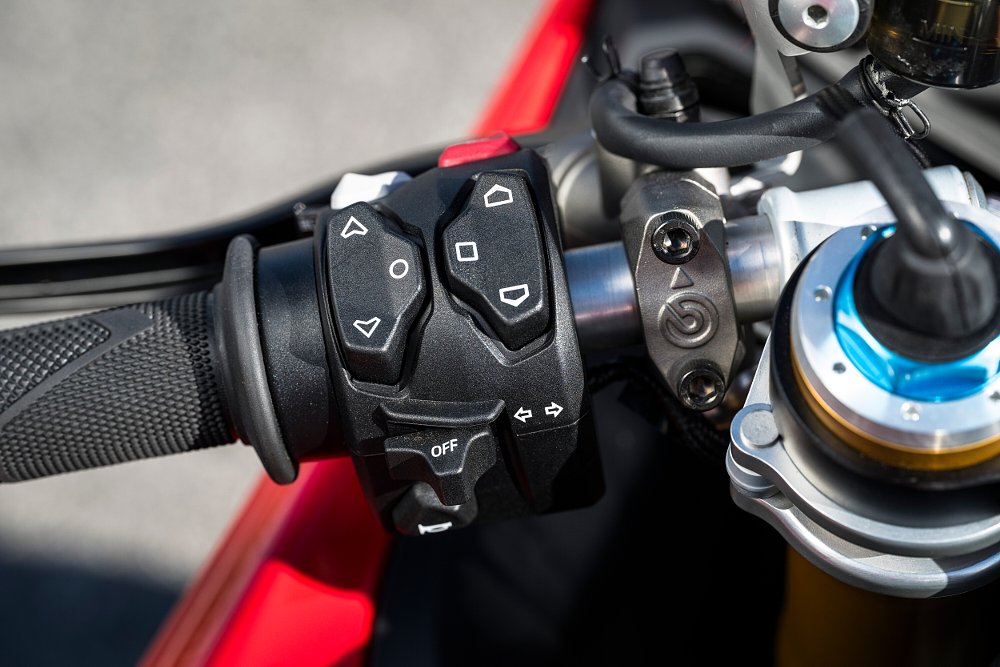
Acting separately from the suspension and the new, linked-brake ABS is a new set of code called Ducati Vehicle Observer. There’s a lot that DVO allegedly does, and a bit of smoke and mirrors around how it actually works. To quote Ducati directly, it’s an algorithm that “allows an instant estimate of physical, kinematic, and dynamic quantities simulating the presence of sensors capable of measuring 70 physical quantities in addition to those detected by the IMU, allowing a precise estimate of both the operating thrusts and the maximum forces that can be tolerated by the bike at that specific moment.”
Basically, DVO uses information from a typical six-axis IMU, as well as other data that the bike is collecting, to simulate sensors that the bike doesn’t physically have. With that auxiliary perception, the target values for certain parameters can be dynamic, rather than fixed. Wheelie control, for example, is theoretically reading more than just pitch of the machine from the IMU, but also myriad other things, and computing them in real time. Then predicting and deciding how much to restrict power to keep the front wheel on or near the ground for maximum acceleration.
Neat. But I think the way Ducati tested and calibrated the system is the coolest part. Engineers took the sensors used on MotoGP bikes that detect, say, torque applied in the rear wheel hub or suspension stroke, and put them on a Panigale V4 test machine. From there they could train the new system to simulate what the actual race-bike sensors were reading, then emulate the performance structure of the machine and electronics aids based on a more complicated calculation of fewer data points. Really neat.
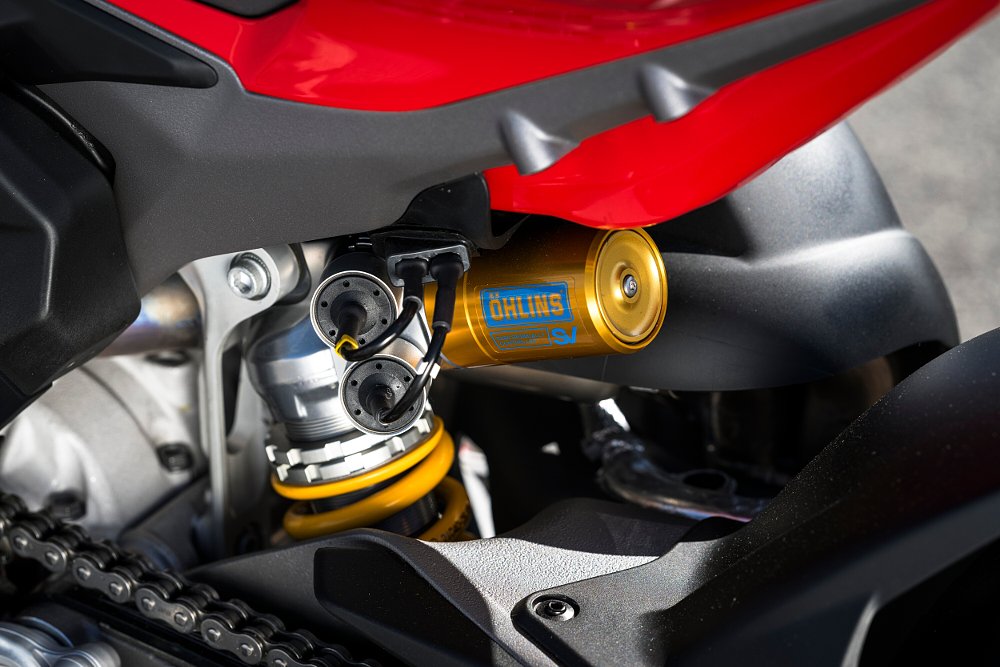
Back to the basics. Covering up most of these mechanical and functional changes is new bodywork for the Panigale V4, which has evolved more in this iteration than it has since the model debuted, with larger headlights and wings that are integrated into the front fairing.
Last of all, optional stuff, which will add to the V4 S’s MSRP of nearly $34,000. Some of the extras were applied to the bike I rode for this test. Believe it or not, there are upgraded brake components available — “racing” calipers with air scoops that help shed heat more efficiently and matching 338 mm discs (up eight millimeters from stock) that are equipped with cooling fins. I did not test (or need) the better brakes.
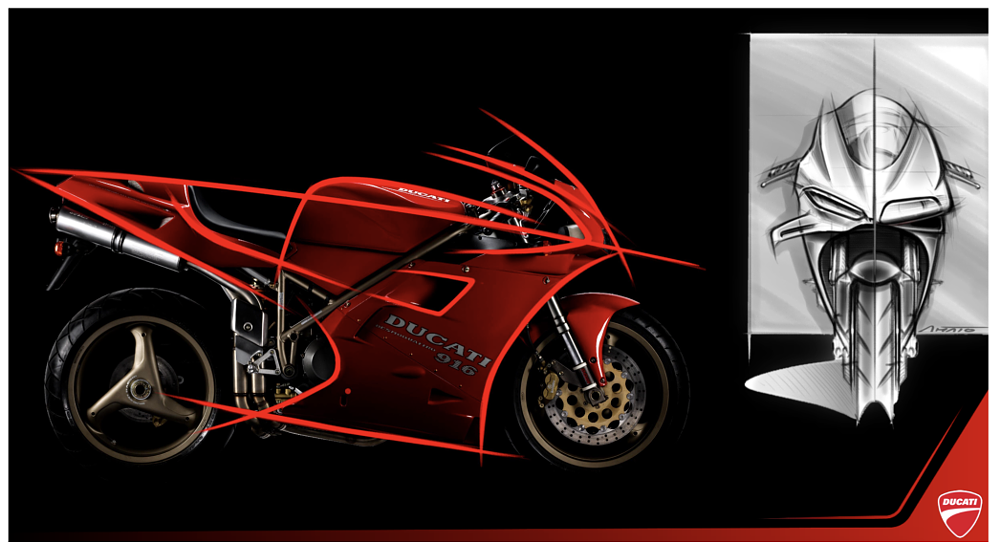
There’s also a data logger with an integrated GPS unit and accompanying software that will allow track riders to analyze bike data. An engineer from Ducati analyzed my ride data from each session, and customers will have access to a version of the same program we used. I was surprised to learn that rear ride height adjustment is not standard. Owners can choose between linkage pieces of different lengths, or purchase an adjustable rod, which incidentally is only recommended for use on a closed course.
The 2025 Panigale V4 S on track
The closed course selected for this test was the Vallelunga Circuit, about an hour north of Rome, a common playground for Bologna’s testers. Bikes for the test were outfitted with some of the optional equipment, including the Ducati Data Logger and the adjustable right-height rod, which was put to use right away. All of the test machines had three millimeters of right height added in the rear and six in the front. 2025 Panigale V4 buyers, take note. Oh, and one more pair of aftermarket pieces: tires with no tread.
Learning a new racetrack is a good way to evaluate a motorcycle, actually, because you’re bound to make mistakes. I am, at least. How helpful the bike is in fixing those mistakes is crucial. I was told Vallelunga is a favorite testing facility for Ducati because the track “causes many problems” for motorcycle handling at speed. Just what I needed.
First things first, I got acquainted with the cockpit. The clip-ons on the 2025 Panigale V4 are a shade higher than last year and the seat is a little lower. It doesn’t feel that way, though. Mostly, the saddle immediately feels a lot flatter and wider, which it is. Even with the changes to the riding position theoretically making the bike more comfortable, it’s still plenty aggressive.
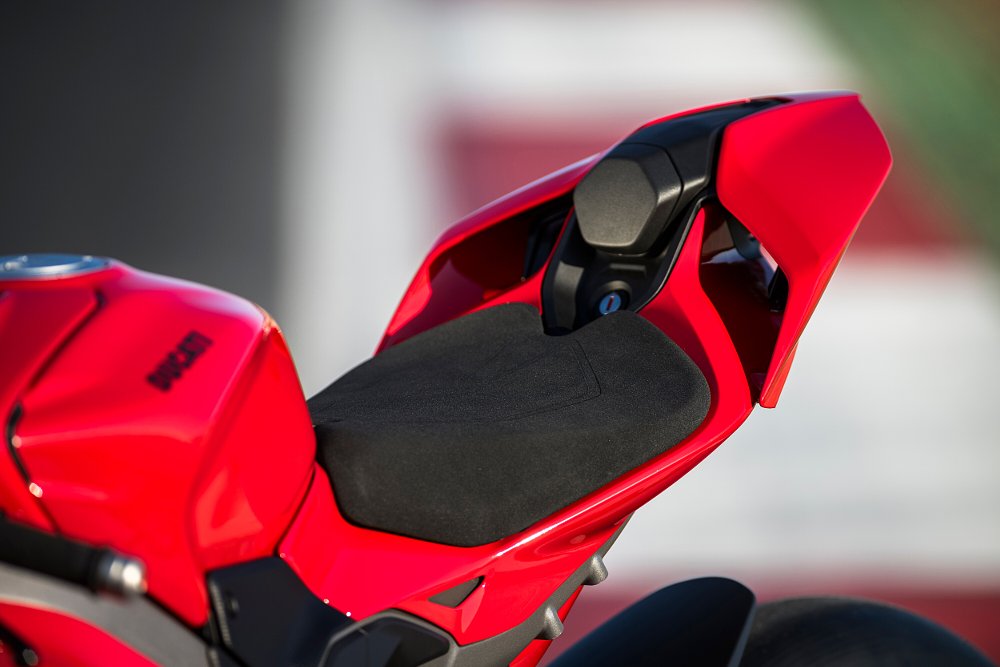
Controlling the new, widescreen dash unit happens via the typical set of up/down/select rocker switches. Many of these systems are getting to be their own language. Even if it’s intimidating at first, once you learn your way around it’s all easy enough. My first session consisted of sightseeing Vallelunga’s 15 turns and testing a setup of electronics in Race B mode — Medium power and moderate suspension damping schedules to match.
The Panigale V4 was well behaved and perfectly easy to ride. Sharp handling, as expected, and there are no surprises in the ergonomics or user interface. By the end of the first few go-’rounds I felt comfortable leaning on the tires, and Race B started to feel soft. Or, at least, not up for everything the Pirelli slicks had to offer.
I switched to the more aggressive setup in Race A, eventually adding some preload to the shock and dialing the damping support in the fork and shock to the maximum setting of +5 (-5 being minimum). Weighing 200 pounds without gear and riding fairly aggressively, I felt like it was the right thing to do. The last step was to test ABS Level 1 (of 7) which is the most aggressive version of Ducati’s new track-focused electronic combined braking system.
Very basically, the brakes are linked front to rear, so when the rider pulls on the front brake lever the rear caliper gets some pressure. Nothing groundbreaking there. However, with the eCBS in Level 1 the bike will apply rear-brake pressure during braking and corner entry and then, somewhat groundbreakingly, maintain some pressure after the rider has released the front brake.
The idea is to help the rider stay on their line by stabilizing the machine in some of the most delicate areas of a flying lap. There’s even a bit of overlap, depending on the corner and the rider, between rear brake pressure and throttle application. If you’re one of those types who doesn’t want a motorcycle making automated decisions, you’ll probably be thinking this feels weird.
The truth is, it doesn’t feel like much at all, except that I felt more confident to brake later and go faster because I was more likely to hit my desired line. It’s possible I wouldn’t have even noticed the system working, but rather given myself credit for fine riding instead. And I think that’s a wise play from Ducati. Don’t make a system like that too heavy-handed, otherwise it’s going to freak people out.
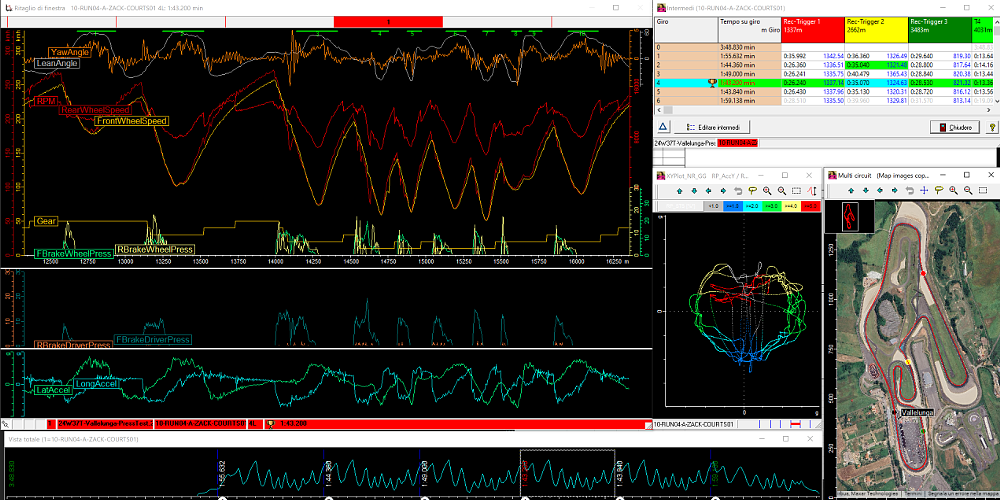
Oddly, I never quite shed the feelings I felt in the first session, of the bike being a little too soft overall. During a few of the acceleration zones at Vallelunga where the motorcycle has a slight lean, I found the chassis loose, tending to sway and pump gently from side to side as the power was laid down. Granted, there’s a lot of power, but the Ducati Pump is a famous trait. Nothing scary, it just got my attention.
The front end was better. I trusted the tires to stick at (my) maximum lean angles and I never felt betrayed by any of the feedback I received — still, there just wasn’t quite enough of it. Full disclosure, I like a race or track bike to be pretty stiff because I like how connected it makes me feel to the pavement. I suspect Ducati’s test riders are more talented and perceptive than I am, and therefore don’t need the bike to be stiff to feel what they need to feel.
In Ducati’s defense, a few aspects of the 2025 Panigale V4 were redesigned purely with the incredible performance of modern tires in mind. All of reduction in lateral stiffness, for one, helps the bike ride more gently over bumps when leaned way over. The bike’s clip-ons are taller, to help riders brace themselves during braking, and the footpegs have been pulled 10 mm inboard to allow for more lean angle without raising their position.
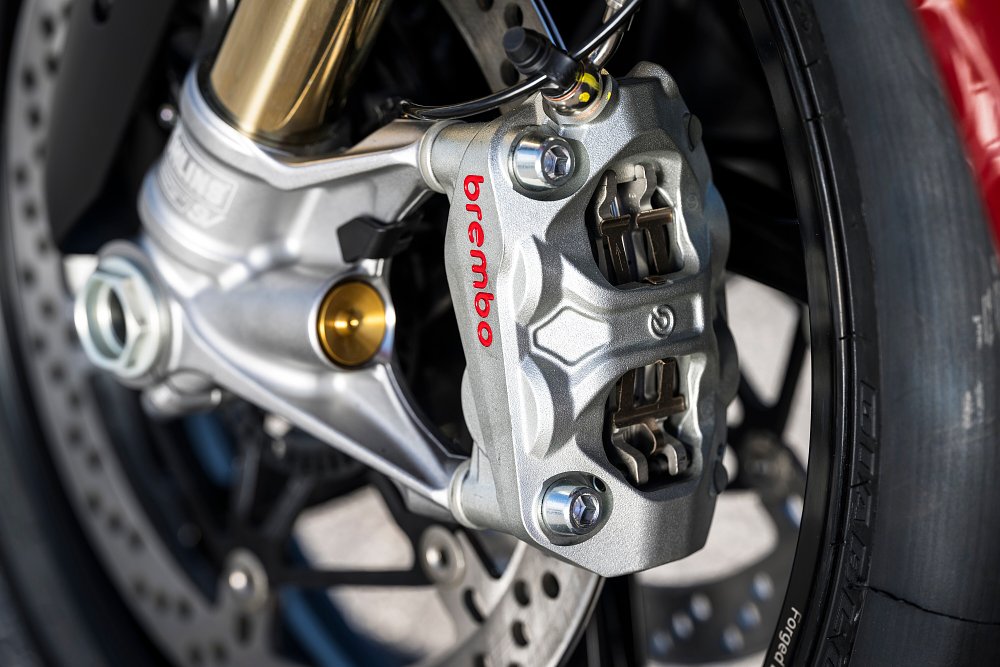
During the new Panigale V4’s development, Ducati tested the bike with many levels of riders, nearly all of which apparently went faster on the new machine than the old one. I think that’s probably true. I should be clear and say that I’m reaching deep for critiques here. It’s a motorcycle that inspires a lot of confidence and doesn’t seem to need you to be a good rider to feel like a good rider.
A new breed of speed
So, all of this performance and loveliness, refinement and cultivation of technology. Why then, on my flight home from Italy, did I feel like a grizzly bear had dragged me across a boulder field? It’s really not the Panigale’s fault, it’s basic physics. Take the first few corners of the Vallelunga circuit — a fantastically fast left-right-left combo into a heavy braking zone for a beautifully banked double-apex righthand curve, followed by another maniacal sprint to 175 mph and hard braking down to second gear.
Over the course of those six corners and 35 seconds, the human body is put under immense pressure. Sitting up and tipping into a corner at nearly 180 mph makes for a lot of wind blast. Steering a motorcycle quickly through corners at 140 mph is difficult. And shedding 100 mph for a corner means massive forces pulling the rider forward.
The 2025 Ducati Panigale V4 S has winglets integrated into the fairing to help keep the front of the bike stable at speed, and has forged wheels to save unsprung weight. On top of that, it has one of the most complex and advanced computer systems, constantly trying to boost the rider’s confidence and keep the bike under control.
Even with all of those advantages, I put a lot of force through the hand grips and footpegs in the fast sweepers, gripped the fuel tank with my legs under braking, and held my core as rigid as I could as the bike pressed itself into the pavement on the banked turn. Riding a fast and competent motorcycle around a racetrack these days can look as elegant as ever, in the hands of the right rider, but it is a violent affair.
Ever notice how some top-level MotoGP and Superbike racers wear protection for their hands under the gloves? It’s because simply holding on is difficult, even for finely tuned, carbohydrate-fueled balls of muscle with gorilla grip strength and minds that process speed like a supercomputer. What hope do we mortals have?
We have the hope that the machine gives us. If those feelings are strong, you will try harder and go faster. If the motorcycle makes you feel better and more confident than ever, you will push further. The new Ducati Panigale V4 is arguably more prepared to help you be your best, and taste more of its performance. It is impressive. Just be ready to feel it in the morning.
| 2025 Ducati Panigale V4 S | |
|---|---|
| Price (MSRP) | $33,895 ($25,995 for non-S) |
| Engine | 1,103 cc, liquid-cooled, 16-valve, V-four |
|
Transmission, final drive |
Six-speed, chain |
| Claimed horsepower | 209 hp @ 12,750 rpm |
| Claimed torque | 89.5 foot-pounds @ 11,250 rpm |
| Frame | Aluminum twin-spar front frame |
| Front suspension | Öhlins 43 mm NPX 25/30 (SV) S-EC 3.0, manually adjustable for spring preload, electronically adjustable damping circuits; 4.9 inches of travel |
| Rear suspension | Öhlins TTX36 (SV) S-EC 3.0 unit, manually adjustable for spring preload, electronically adjustable damping circuits; 5.1 inches of travel |
| Front brake | Brembo Hypure four-piston calipers, 330 mm discs with ABS and race eCBS |
| Rear brake | Brembo two-piston caliper, 245 mm disc with ABS and race eCBS |
| Rake, trail | 24.0 degrees, 3.86 inches |
| Wheelbase | 58.5 inches |
| Seat height | 33.5 inches |
| Fuel capacity | 4.5 gallons |
| Tires |
Pirelli Diablo Supercorsa SP-V4; 120/70ZR17 front, 200/60ZR17 rear
|
| Claimed weight | 439 pounds |
| Available | Nov. 2024 |
| Warranty | 24 months |
| More info | ducati.com |





